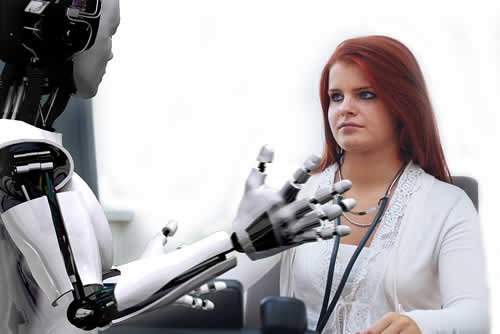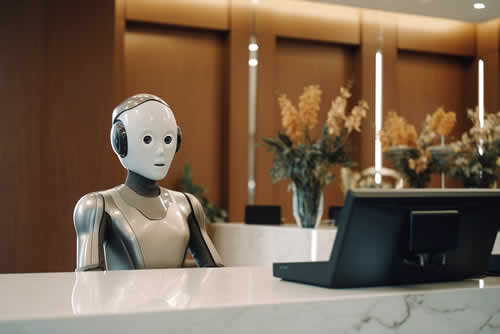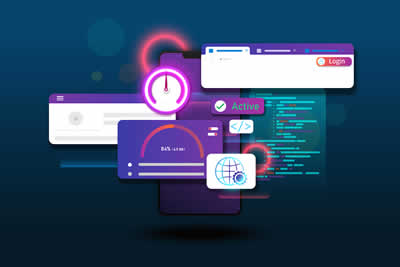Most of us know that artificial intelligence (AI) is now more accessible to businesses than ever before. (If you aren’t, what exactly do you do with your time??) But just because you
can use these tools, doesn’t necessarily mean that you
should! AI brings with it some fantastic opportunities for businesses, specifically through automation of tasks which will boost scalability, but it can also be damaging when it’s not used properly.

As helpful as AI is (and it really is!) there are some things that need the human touch - and automating these can lead to ethical concerns, missed opportunities ... and dissatisfied customers.
In this article, we’re weighing up the pros and cons of automation and sharing tips on when to automate and when it's best to leave alone.
When Automation Should Be The Authority
Automation best
works its magic in completing repetitive tasks quickly, accurately and consistently - reducing time taken and errors made, and providing a high return on investment. In this section, we’ll dive deeper into some of the environments in which automation is absolutely your business’s new best friend.

High-volume, repetitive and, quite frankly, dull tasks
Completing repetitive tasks manually is not only boring for employees but they’re also a bad use of their time. Boredom and fatigue often lead to errors which can be damaging to your business and lead to high staff turnover. Such tasks might include:
- Data entry
- Inventory management
- Payroll processing
- Simple customer support tasks such as checking the status of orders
Automating activities that follow predictable patterns with little or no variation frees up employee time for more productive tasks and limits the risk of errors. It’s also possible to hire the services of top-rated
transcription professionals to quickly and easily convert audio and video recordings into written content in a fraction of the time that it would take a mere human.
Crunching the data
I’m sure that we don’t need to tell you the importance of data for a modern business - or that managing it properly can mean the difference between success and failure. This is particularly vital for companies that rely heavily on data analytics including those in the finance, e-commerce, healthcare and insurance industries.
Data management is something that absolutely
must be automated, and that's because AI is able to crunch its way through massive, complicated datasets much faster and more accurately than people can. Keeping your business relevant relies on the ability to make strategic decisions based on patterns and forecast trends and AI can do all of that in the blink of an eye while also, just as importantly, flagging any anomalies.
Some real life examples of this at work might be a marketing team using AI to automate customer segmentation to deliver personalized, targeted messaging - or a finance company using these clever tools to detect fraud through monitoring transactions.

Open all hours
One of the great things about AI powered automation tools is that they don’t need time off (or even toilet breaks). For businesses, this means that systems can be up and running 24/7 and across multiple time zones - providing, for example, tech support, sending payment reminders and managing scheduling; all while your employees are tucked up in bed.
It’s not just numbers-based business that can benefit either - these days, organizations like schools and estate agencies are recognizing the benefits of this tech in providing guided tours and simple customer support to their clients out of hours.
Staying within the law
These days, more and more sectors are subject to regulatory requirements - and breaching these can result in some pretty stiff penalties; particularly within the legal, financial and healthcare arenas. Even with the best will in the world, people make mistakes – and some of these can be very costly. AI, of course, is blissfully unburdened by human error. So it can easily manage records and reports while at the same time looking out for any activity which may not be compliant. Healthcare providers, for example, are already using this power to automate patient data entry and to make sure that their record-keeping meets HIPAA standards. In this way, they simplify audit processing and limit risk.
Making connections through integration
You can have the best tech on the market but, if your systems don’t talk to each other, they’re unlikely to be effective - and this is where AI can help. This technology can create end-to-end automation by building bridges between systems. An example of this might be an automated workflow which takes a new customer order and then updates inventory, raises an invoice, confirms the order and then alerts the shipping department. For e-commerce businesses in particular, this can be a game-changer in improving efficiency and reducing delays caused by human to human interactions.
When Humans Should Handle the Load
So, we’ve given you an idea of the areas in which automation can shine - but there are also times when there is simply no substitute for the human touch. In this section, we’re examining the tasks that your business probably doesn’t want to trust the tech with!

Cracking creative complexities
You’ve probably seen news stories about how AI can generate content and even write books and it’s true, it can - just not very well. While AI is great at automating tasks, it’s not quite as good at anything that requires creativity. When it comes to things like creative writing, branding, strategies and product development, you shouldn’t rely on the tech. This is because branding and storytelling need to take a number of things into account such as cultural awareness and relevance and, here, AI is simply no match (yet) for the human brain.
As good as AI is, it doesn’t yet understand tone sensitivities and the human elements that appeal to people and shape customer behavior, so results are unlikely to be good. Instead, this is the time to let your employees shine as they flex their creative muscles.

If you'd like to learn more about what we provide, why not take a look at how we can help?
Boost your skills with our market-leading online courses at super-low prices.
It’s complicated - tackling emotion and sensitivity
So, picture the scene - an irate customer gets in touch because the dress that she ordered to wear at her son’s wedding did not arrive in time. Your AI chatbot will not, of course, be able to understand the anger and upset and will simply send a standard response - which will usually only serve to make the customer more irritated. When we have a problem, we’re looking for support, empathy and either a solution or compensation and this is something that only a real life person can provide. Without this, you risk a loss of custom through miscommunication and frustration.
Best practices need the human touch
The thing about AI is that it tends to base its decisions on reason, logic and patterns of behavior - and this doesn’t unfortunately factor in the often messy and complicated human nature. Because of this, sensitive and / or high stakes decisions on things like crisis management, PR or recruitment should be handled in a more human-centric way. For example, while AI can provide insights during the hiring process, it can’t detect red flags during an interview or understand empathy and context during a disciplinary action. In some cases, AI has also been proven to show bias when sorting through candidate resumes.
Another no-no for AI is crisis management. While most businesses hope that they won’t ever need to deploy this, it does happen and, when not managed properly, the use of AI can make things worse by showing your business to be tone-deaf, disconnected or simply incompetent.

Flexing flexibility
In a fast moving world, most businesses will be thrown the occasional curveball - and how you handle these is incredibly important. Although AI is great at solving problems which follow a standard pattern, it's simply not capable of on-the-spot creative thinking to resolve an issue or making a judgement call which, while not logical, will nonetheless get the job done.
AI is constantly learning and adapting and there’s little doubt that, in time, it will be able to step up to the plate regarding creating thinking - but that time is not now. Because of this, over-automating here may cause serious gaps in your business’s ability to pivot and perform.
Unfinished business
In the modern company, processes and systems are often a work in progress - which is perfectly normal. This does, however, mean that these workflows need to be handled by the humans. Why? If a system is not yet fully understood or is poorly defined, automation will almost certainly lead to errors and inconsistent results.
Conclusion
Automation through artificial intelligence is an incredibly valuable tool for businesses and improves productivity and efficiency whilst reducing employee fatigue. These tools are able to make light work of repetitive and complex data analysis with laser accuracy - and that’s where its use should start and finish.
When it comes to the parts of your business that involve creative or emotional responses, you need human superpowers such as empathy, flexibility and the ability to make moral and ethical decisions.
The sweet spot here is having AI and people working hand in hand to create a business which is productive and efficient while still remaining relatable to employees and to customers alike.






























